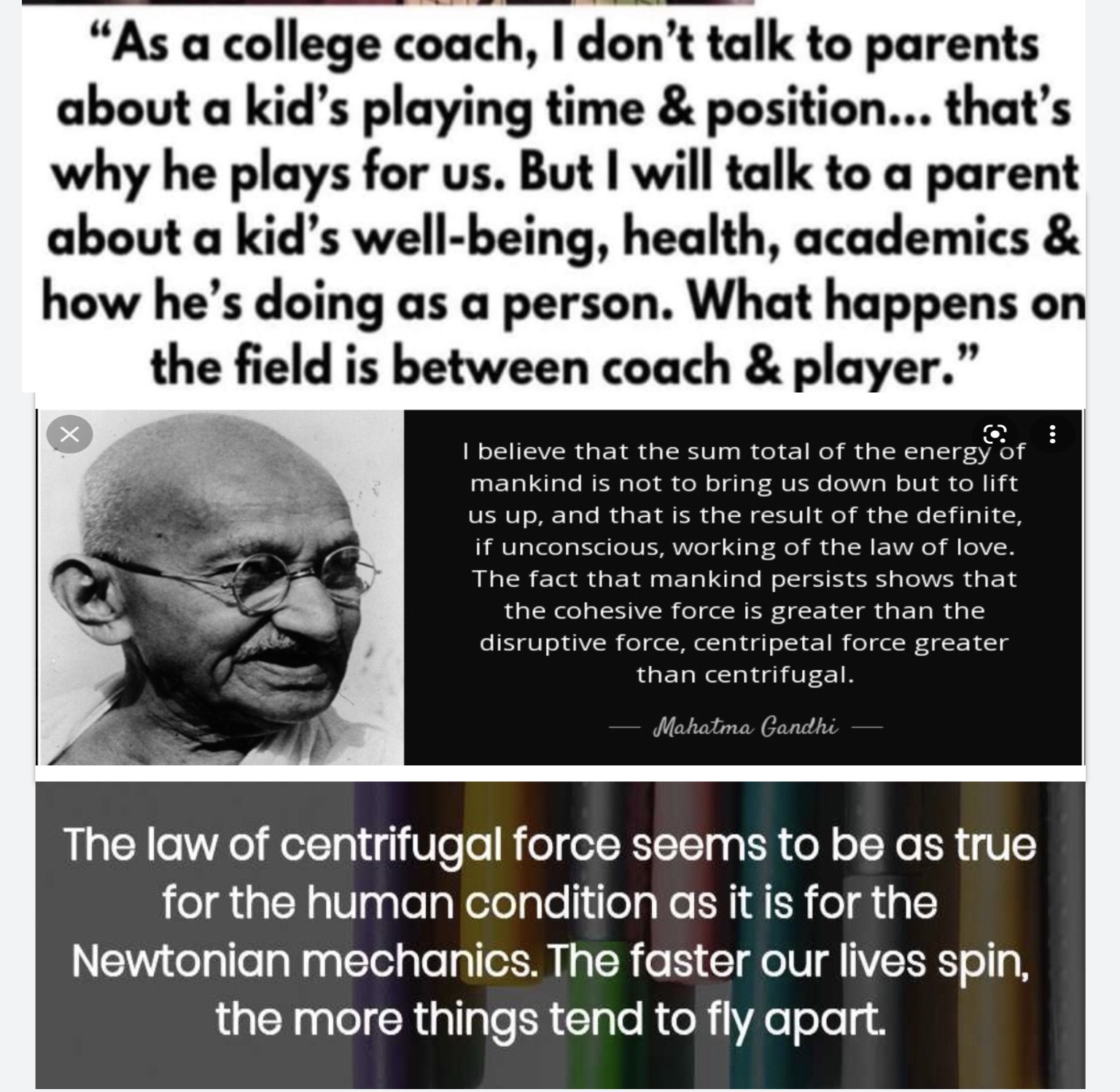
In the 2008 Women’s College World Series some of my hitters used a split grip from one of our drills in the actual game which was nationally televised on ESPN. Afterwards, people starting associating me with the split grip because from 2008 onward we always had 2 or 3 players in the line-up who swung with a split grip during the actual games, and thus the nickname ”Mr. SPLIT GRIP”.
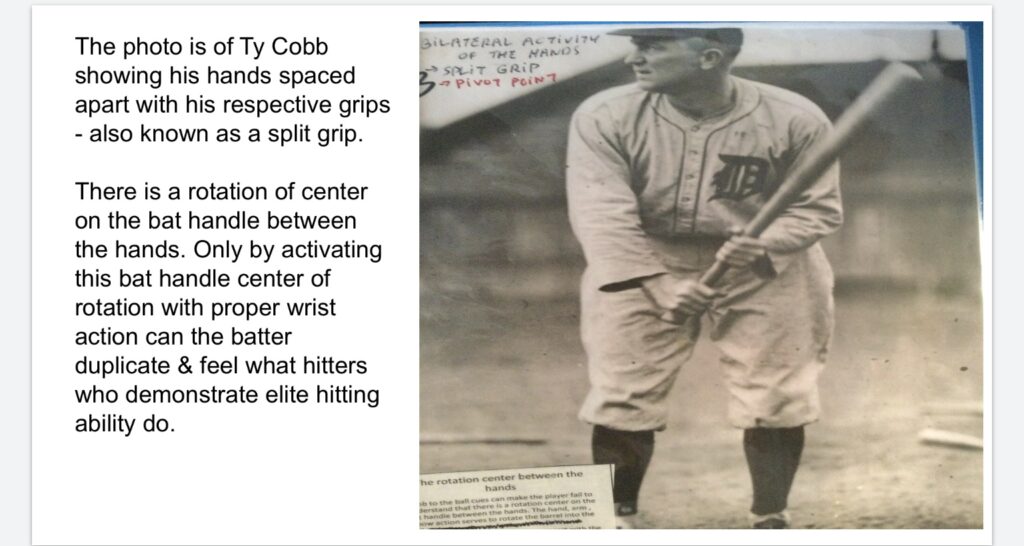
The SPLIT GRIP helps a hitter to know and feel that there is a ROTATION OF CENTER ON THE BAT HANDLE BETWEEN THE HANDS. Only by activating this bat handle center of rotation with proper wrist action can the batter feel and duplicate what hitters who demonstrate elite hitting ability do.
With the split grip, the hands apply and transmit force in hitting with a separate, bilateral hand action. There is a big difference from the wrist action in hitting a baseball and the wrist action in golf which has the wrist snapping and rolling over. When hitters use the golf method of wrist snapping and rolling over, the common flaws show up in the the baseball swing seen by hitters pulling the knob and thus the barrel across and away from their bodies.
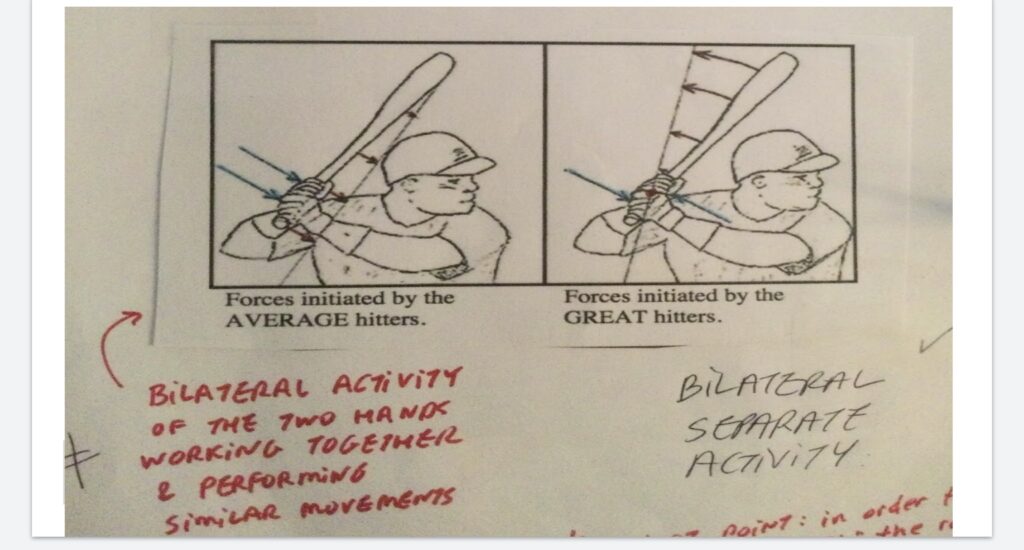
Wrist and forearm motions to move the bat barrel to reach multiple targets and different parts of the hitting/strike zone cannot be modeled by simple, uncoupled motions.
Wrist motion is classically described in terms of two orthogonal axes: pure flexion-extension and pure radial-ulnar deviation. Baseball/softball hitting requires the wrist to rotate close to simultaneously about both axes.
Bilateral SEPARATE activity of the hands is a key training component. Bilateral separate activity of the hands create equal and opposite forces and apply pressure to the bat handle in specific movement planes. In hitting a baseball, the bottom hand is providing stability while the top hand via the wrist is making precise, separate movements.
Earlier and more steady application of “handle torque” by bilateral separate hand/wrist activity is better with a shorter, quicker swing tailored for limited reaction time. Getting the swing arc &/or swing radius shorter and tighter – or after contact, staying palm up with the top hand, not rolling over immediately, are ways to feel a cleaner, more efficient barrel path.
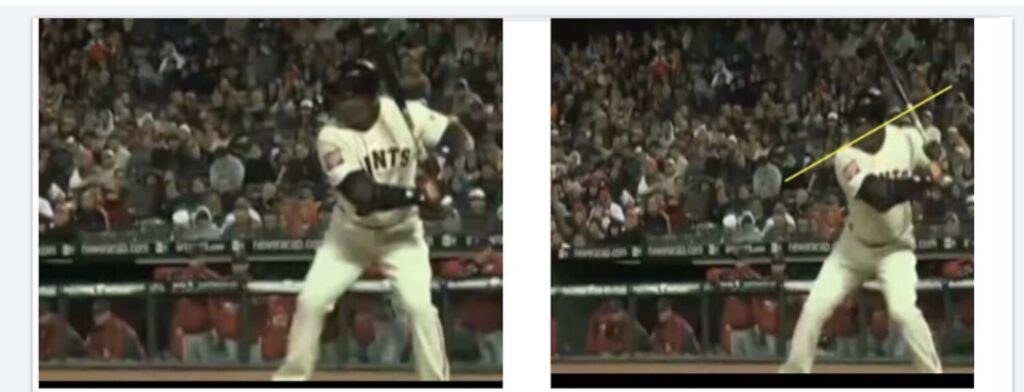
Above Barry Bonds showing his hand coupling and bilateral separate hand and wrist activity.
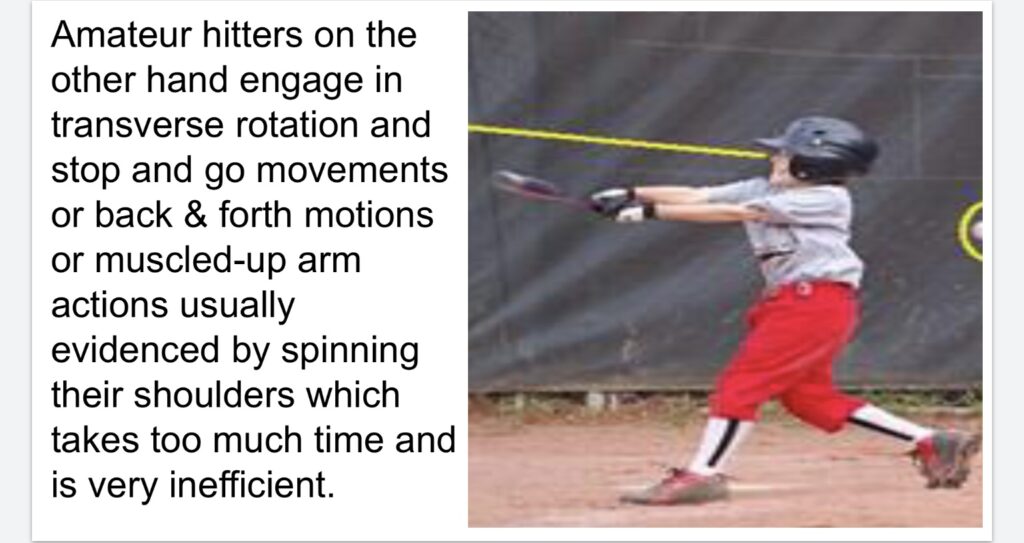
The wrist kinematic strategy for reaching targets in the various parts of the strike zone requires significant coupling.
Let’s be clear: there are multiple, different ways and combinations available to hitters and that have proven successful over time – it’s the degrees of freedom challenge. There is no ”right way” or ”perfect combination” but there are plenty of clues available.
But in our reviews, most non-elite baseball/softball hitters try to use uncoupled wrist motions or bilateral “similar” hand activity and simply CANNOT anatomically get to many of the located targets.
Hitters that do not use bilateral “separate” hand activity are forced to make inefficient, compensatory movements that most times involve the improper and excessive use of the shoulders and upper trunk. Such compensatory shoulder movements include counter rotation of the upper torso and ”big” moves trying to get length with their hands behind the rear shoulder which compromises control and consistency.
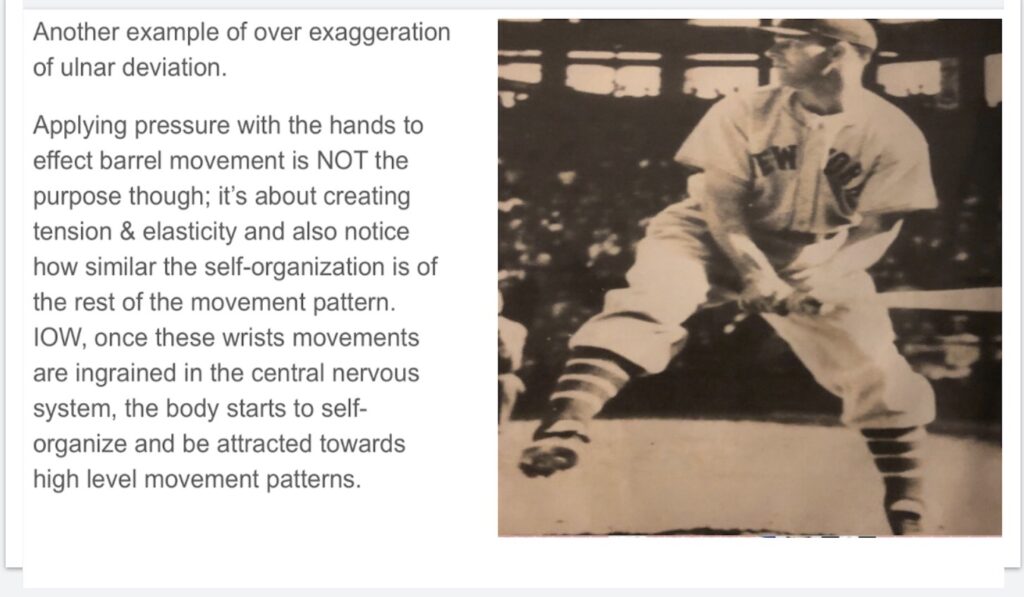
The ability to pre-tense the muscle around the joint and either reduce or remove muscle slack before performing a dynamic action the baseball/softball swing is a separating factor between performing at a top level or mediocre level.
During hitting training, the concept is to cultivate the elasticity of the fascia, tendons and ligaments – for instance, through a movement like ulnar deviation of the top hand wrist seen above. The ballistic stretch is bouncy, quick, athletic and cultivated within a time constraint of a matter of 100th of a second, in rhythmic, coordinated sequenced motion.
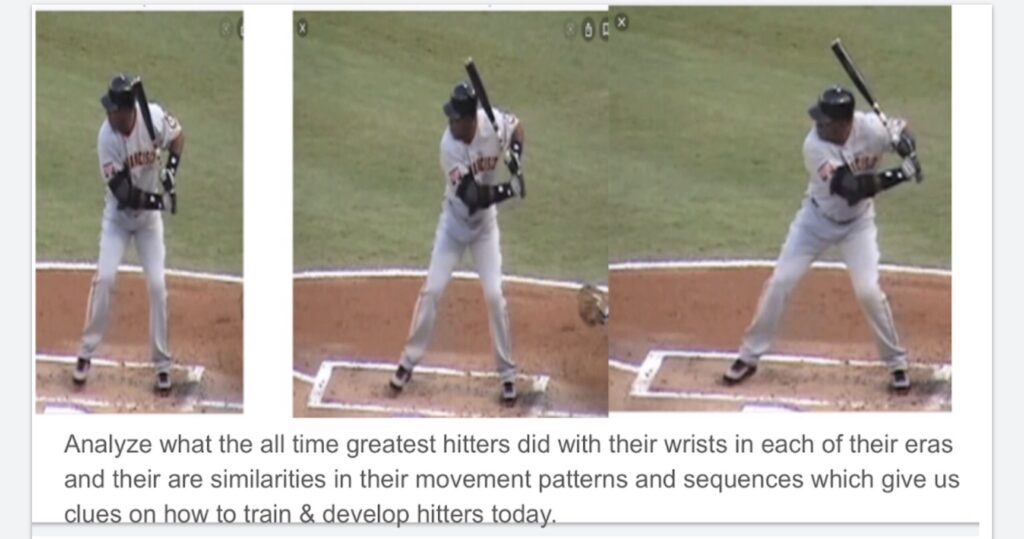
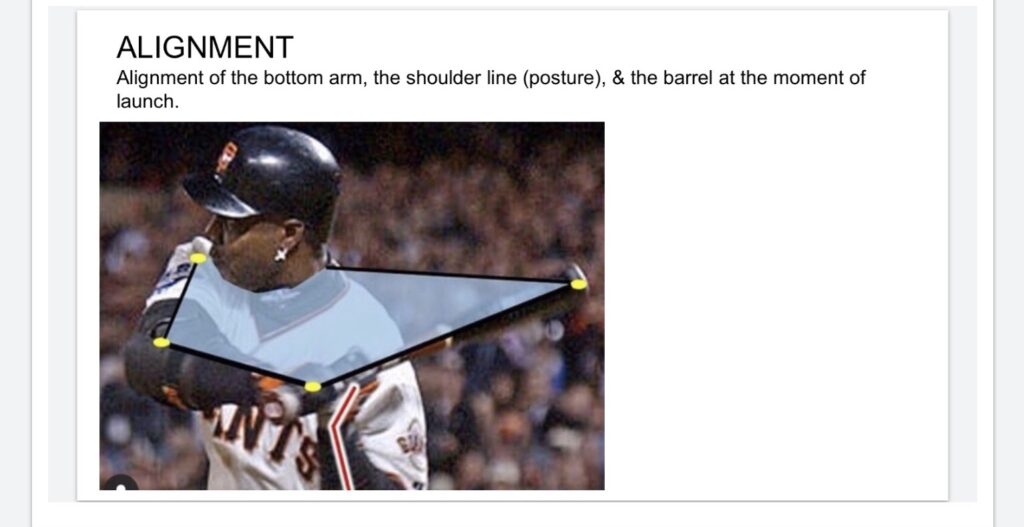
The goal of each swing is to ”get the swing on plane with the trajectory of the pitch”, on time, and with as close to 100% of your power and bat speed. Most all great hitters do this via ALIGNMENT.
The wrist is the foundation of all movements of the hands, fingers, thumbs and forearms needed for the use of the upper extremities. Many athletes require the benefits of improved control and additional strength to the wrist muscles, tendons and joints.
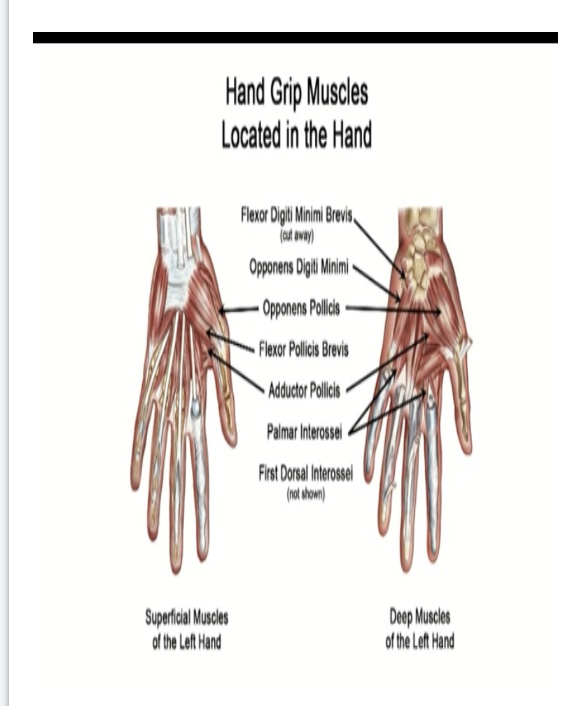
Hitters must increase their wrist range of motion and strength in order to achieve peak performance.
If a player-hitter is not provided solutions to improve their movement patterns through positive growth and reliable proven protocols, then it is highly unlikely they can improve their skill performances.
PURSUE EXCELLENCE & WIN THIS PITCH!
